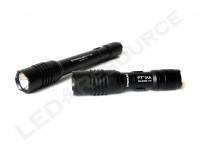 Professional Tactical, or ProTac, is a new line of flashlights from Streamlight featuring aluminum construction, small size and light weight, a choice of form factor, and multi-mode operation. Consisting of four lights, the ProTac Series offer a choice of using one or two AA, or lithium CR123A, batteries. For this review, we will be taking a closer look at the miniscule ProTac 1AA, along with the larger ProTac 2AA.
Professional Tactical, or ProTac, is a new line of flashlights from Streamlight featuring aluminum construction, small size and light weight, a choice of form factor, and multi-mode operation. Consisting of four lights, the ProTac Series offer a choice of using one or two AA, or lithium CR123A, batteries. For this review, we will be taking a closer look at the miniscule ProTac 1AA, along with the larger ProTac 2AA.
Key Specifications
- Output (1AA): 50 lumens high, 6 lumens low, 50 lumens strobe
- Output (2AA): 120 lumens high, 14 lumens low, 120 lumens strobe
- Runtime (1AA): 1h 45min high, 22h low, 4h strobe
- Runtime (2AA): 1h 45min high, 21h low, 4h strobe
- Battery: 1AA: 1 x AA, 2AA: 2 x AA
- Length: 1AA: 3.97″, 2AA: 5.97″
- Diameter: 0.9″
- Weight with Batteries: 1AA: 2.3 oz., 2AA: 3.4 oz.
- Warranty: Limited Lifetime
- MSRP: $68 to $70
- Actual Pricing: ~$40
Pricing & Ordering
MSRP for the ProTac 1AA and 2AA is $68 and $70, respectively, and they are only available in black.
All four models of the ProTac Series can be found on for around $40 at most retailers.
In The Box
Included in the blister packaging are: Streamlight ProTac 1AA (or 2AA), 1 x AA (or 2 x AA) Duracell alkaline battery, and holster.
Batteries
The ANSI FL-1 standardized output and runtime specifications of these lights were made using alkaline batteries, which are included, and NiMH rechargeable and Energizer Lithium primary AA’s may also be used for increased brightness and more consistent output.
Our runtime test for the high mode reported 1:40 from a set of LSD NiMH that had been stored for four months, and 2:00 from freshly-charged LSD NiMH. The ProTac Series lights automatically shut off when battery voltage drops below 1.0V per battery. The cut-off reduces runtime, but does protect NiMH batteries from deep discharges.
The Light
Head
The head features a tempered glass window and a smooth reflector, and cannot be removed from the body.
The bezel is crenelated, making it easy to see if the light is turned on, even when placed head-down. There are three flat spots on the sides of the head, which prevents the light from rolling away even if the pocket clip has been removed.
Body
The light is type-II anodized aluminum inside and out. A forward-facing removable pocket clip is attached to the body of the light near the tail cap, enabling bezel-down carry that protects the glass window.
The pocket clip is fairly sturdy (almost too sturdy, especially on the 1AA because it rests on the bezel, but should loosen up after some use), and can be removed by just pulling it off.
Tail Cap
On the tail cap is a forward clicky-type switch covered by black rubber with Streamlight’s logo on it, which gives the button a nice texture. The tail cap also features crenellations, which prevent accidental button presses, but the light cannot stably tail-stand. The tailcap can be unscrewed a quarter-turn to disable the light from turning on.
One minor problem here is that the end of the tail cap spring is exposed, which would scratch the batteries and make some noise when twisting the tail cap. Luckily, this can be quickly fixed by tucking the end of the spring below the last coil (a five-minute fix that only requires needle-nose pliers). The last coil of the spring should also be crimped, to prevent the end from popping back out. The picture above was taken after the fix.
Modes
All four ProTac Series lights feature the same three-mode user interface, which is operated by clicking the switch on and off.
1 Click: High
A single click activates 100% mode.
2 Clicks: Strobe
With two clicks, the 100% strobe mode is activated.
3 Clicks: Low
With three clicks, the 12% low mode is activated. The light will briefly strobe before low can be activated, which could be irritating.
The light gives you 0.4 seconds to switch to strobe, and 0.8 seconds to switch to low. This isn’t a generous amount of time, but I didn’t have any trouble switching modes within the time limit. The short time limit helps prevent accidental activation of the strobe, which hasn’t happened with regular use of either light.
If you tend to use a low-output mode frequently, the time limit and sequence could be problematic. However, for those that use high-output most of the time, the other two modes are well-hidden unless needed.
Performance
The 1AA light is rated for 50 lumens and 76 meters of throw, and the 2AA is rated for 120 lumens and 110 meters of throw. Both lights feature a Cree XR-E LED, which produces a clean, smooth beam designed for throw. A couple rings are visible around the hotspot in the center when shined at a wall up close, but won’t be noticeable during normal use. All ProTac Series lights can be submerged in up to 1 meter of water.
The 2AA is slightly brighter than several other 2AA lights, but with shorter battery life. The 1AA is almost as bright the 2AA, especially when using a lithium primary, due to the fact that lumens and perceived brightness isn’t linear (a rough example is that 4X more lumens will appear 2X brighter). Given the small size and convenience of only using one cell, the 1AA will be more than adequate for lighting up a dark sidewalk at night or peering behind a desk.
Runtime
If you haven’t read our article about runtime graphs and the ANSI FL1 Standard, please click here.
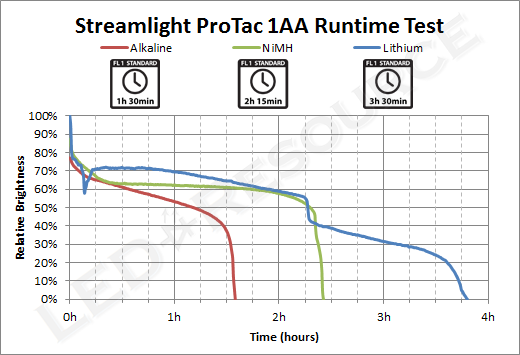
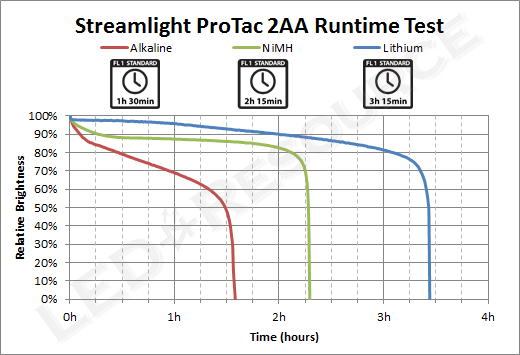
Accessories
The holster that comes with these lights is a good “getting started” type of accessory. The Velcro belt loop accepts belts up to 2.5” wide, and the flap is also secured with Velcro. Unlike the 1AA’s holster, the 2AA’s uses elastic on the sides, which can catch on the bezel when the light is removed.
Construction of the holsters is a somewhat flimsy, and some precision is required when inserting the light because the holster doesn’t hold its shape. They are adequate for casual or recreational use, but for more heavy-duty use, investing in a better holster would be a good idea.
Conclusion
Our recommendation here would have to be for the ProTac 1AA. The ProTac 1AA is a small and bright single-AA light, backed by a lifetime warranty. As the ProTac 1AA and 2AA are around the same price, the 2AA would also be a solid choice for a higher-output light that is one of the smallest in its class.
| Pros | Cons |
|
|
Related Links
Streamlight ProTac Series Announcement

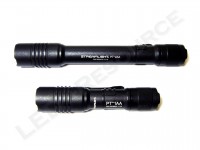
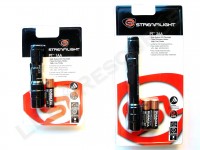
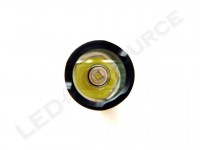
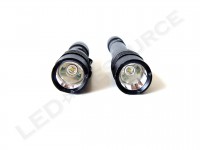
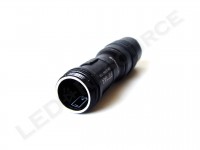
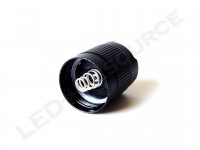
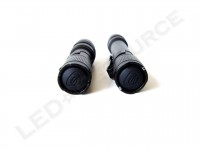
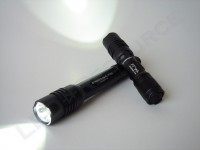
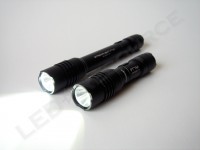
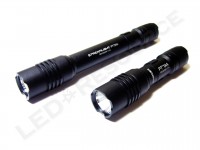
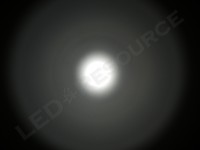
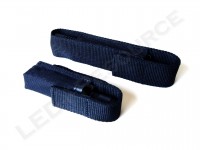
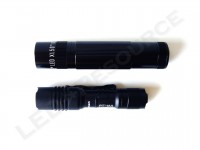
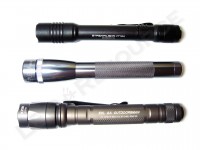


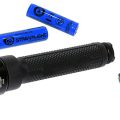

Great review! I have a 1AA and just love it. Some of the best money I’ve ever spent and the perfect blend of inexpensive and common battery, durability, size, and lumens to have on me at all times for years to come. More impressed with holster than you but would like to find one with extra battery carry. Lanyard would also be nice, but just details. Great product!
The 1aa is an amazing edc tactical light. i have it on me at all times. the run time and lumens are far more than the specs say. i have 65 lumen lights that arnt this bright. get this light people! it will save ur life!
I have a ProTac 2AA. I use it @ work for equipment repair, restaurant industry. It’s extremely bright, easy to use and lightweight. The only set back is the carrying case/holster…needs a belt clip without velcro. A stainless steel belt clip would work much better…
I have the 2aa 120 lumen version and got a runtime of 1 hour 56 minutes on high with 1900-2100 mah eneloops. They only have about 20 or so charges on them. Should the runtime be closer to the 2 hour 15 minutes you got? Do you test with the same batteries?
Also, is there a test planned for the updated 1aa and 2aa models?
Marke,
I wouldn’t worry too much about a 15 minute difference, but does your LED look like the one in our pictures? If not, you could have the updated model. We use Eneloop HR3-UTGA, which are fully charged prior to runtime tests.
We don’t have samples of the updated models since it’s only a minor upgrade.
Robin
Robin,
You do such great reviews but I never understand why you always say “NiMH rechargeable and Energizer Lithium primary AA’s may also be used for increased brightness and more consistent output” for most of your reviews.
Streamlight customer service specifically says that they do not support rechargeable AA batteries in the 1AA or the 2AA and informed me “can blow the LED. Should this happen, the lifetime warranty on the LED would be void.”. Also only the 1AA supports Lithium batteries while the 2AA does not.
I think the imformation presented in these reviews is misleading, as rechargeable battery support is very important for many flashaholics and general consumers too. I also think that as Streamlight customers we should be criticizing them strongly for not supporting standard batteries especially when other makers such as Fenix, Nitecore, Jetbeam, Petzl all support and even recommend NiMH batteries due to them not leaking and more efficient usage, even US makers such as Princeton Tec, ZebraLight, Brite-Strike and TerraLUX all support rechargeable AA/AAA NiMH batteries in their flashlights. Only with such strong criticisms from us will they consider changing their specs.
As for the “Lifetime warranty” it is a Limited Lifetime Warranty with switches and electronics only being covered for 2 years, so I think it is important to state this.
I hope you amend the review and take these points into consideration in future reviews too.
Thanks
Thanks for your input. I’m not sure why Streamlight is telling you that rechargeable batteries cannot be used, but the only Streamlight with specific battery compatibility issues is the Knucklehead (and that’s only because lithium AA’s void the safety rating, not because of a technical reason).
We’ve tested these lights with NiMH and lithium primary batteries, and the extended operation during runtime tests is a type of stress test. If there was any danger of overheating the LED, it would have already happened, so we do not believe that there is any significant risk with using non-alkaline batteries.
It’s common for switches and electronics to be excluded from the warranty, but many major manufacturers usually good-will these type of issues. I will try to see if there is any way to incorporate some of the warranty fine print into our reviews.
Robin
I have a protac 1aa and it’s a good light. I want to use rechargeable batteries in it but Streamlight customer service said not to. They said it might damage the light. Have you had problems using rechargeable batteries in a protac 1aa ?? Please help !!
Jay,
We haven’t had any issued with rechargeable NiMH batteries in any AA or AAA light. Generally, rechargeable 3.7V lithium-ion batteries are not recommended, but 1.2V NiMH should be fine.
Robin
Good review. I have the protac 1aa 70 lumen light and i noticed when using eneloops sometimes the light flickers im wondering is this because eneloops are 1.2 volts and the light was made for 1.5? Again it only flickers sometimes. The threads of the light are clean. Im wondering if i should send it in or is this normal?
Joseph,
It should not have any problems with NiMH rechargeables. When does it flicker? If the battery is fully charged and you’re running on high mode, there is probably something wrong.
Low mode uses PWM, which is esentially a high frequency flicker, so flickering is normal. Some people are more sensitive to PWM than others, so it may not always be noticeable.
Hope this helps.
Robin
I have the 2AA as well, it’s a great light. An issue I have recently is that if it is on for more than a few minutes with NiMH batteries in it the boot over the on/off button balloons out to about 3/4 of an inch around! It must be internal pressure because once I loosen the end cap to the point of breaking the seal I hear a slight hiss and it pops back into place. I have looked and see nothing in writing about any batteries not to use, just stating longer run time with Lithium batteries versus Alkaline. Anyone else encounter this?
Ron,
Your NiMH batteries may be venting, which is not normal and a sign that they should be replaced.
Robin
I am unable to unscrew the tail end off to replace the batteries. Any ideas to help me with this?
Betty,
Most likely the battery has leaked. You may be able to use some tools to open the tail cap and extract the battery, though corrosion may have eaten away at the contact at the front of the light, so the light may not be salvageable.
Take a look at this article for more information as well as options to contact the battery manufacturer for a claim. Note that you will need to know what brand of battery is installed otherwise they may deny the claim.
https://www.streamlight.com/resources/learning/battery-information
As a final note, I would not recommend using alkaline batteries in infrequently used or sealed devices due to the risk of leakage. Consider Energizer Ultimate Lithium batteries for infrequently used devices or Eneloop rechargeable NiMH batteries for frequently used devices.
Hope this helps,
Robin